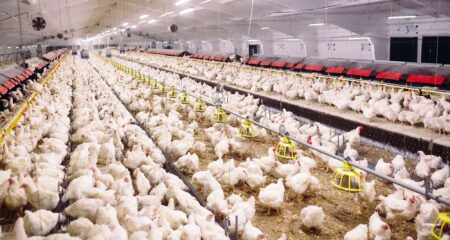By Tom Polansek, P.J. Huffstutter, and Karl Plume
CHICAGO, Oct. 9 (Reuters) – U.S. data vital to global grain and soybean trading has gone dark during the federal government’s shutdown, leaving commodity traders and farmers without crop production estimates, export sales data and market reports during the peak of the autumn harvest.
The data blackout comes at a particularly difficult time for farmers, who are grappling with low grain prices and uncertainty over damage to corn and soy fields from dry weather and crop diseases. GRA/
Previous shutdowns during President Donald Trump’s first term were less disruptive because they happened after harvest season, analysts said.
Trump is now locked in a trade war with China that has kept the world’s biggest soy importer from buying U.S. supplies. Traders have been watching closely for any hint of a deal, but the U.S. Department of Agriculture is not confirming export sales as usual now.
The disruption has left growers and traders without fresh government information on the progress of the harvest and the state of the crops. The industry relies on USDA reports to price and hedge commodities from corn and soy to cattle and hogs.
“The market is just flying blind here,” said Sherman Newlin, an Illinois farmer and analyst with Risk Management Commodities.
Among the halted releases are USDA’s weekly export sales report and daily sales announcements, and its monthly World Agricultural Supply and Demand Estimates (WASDE), which was due on Thursday. The supply and demand report would have provided updates on U.S. corn and soybean output and global demand while farmers haul in large crops.
The Commodity Futures Trading Commission also suspended the release of weekly data that shows speculators’ positions in the markets, which can influence crop prices.
The CFTC could not immediately be reached for comment, while the USDA blamed Democrats for data disruptions.
“While Democrats continue to vote to prolong the government shutdown, key USDA reports like WASDE and the crop progress report are delayed, depriving farmers of important information they use to market their crops and plan for next year,” the USDA said in a statement to Reuters.
Without those updates, investors are talking with farmers, studying satellite imagery and focusing on technical pricing movements on the Chicago Board of Trade to try to figure out what commercial grain traders and commodity funds are doing.
But the data gap has resulted in a lack of market transparency and an uneven playing field, some traders said.
Major grain firms such as Cargill, Bunge Global BG.N and Archer-Daniels-Midland ADM.N hold large grain inventories and proprietary data, giving them an advantage over smaller players, traders said. The companies declined to comment.
Missing an Objective Picture
Trading volumes in grain futures have suffered as investors hesitate to take large positions without the CFTC’s weekly Commitments of Traders data, which reveals fund positions.
“Without that kind of data, who wants to take on big risk?” Newlin said.
The blackout hits U.S. traders hardest as market participants in Asia, South America and Europe have other data sources, said Ole Houe, director of advisory services at IKON Commodities in Sydney.
Traders said they can survive October without USDA’s monthly supply and demand data because it is well known that U.S. harvests are large. They could face a shock when updates resume, though.
“The entire grain industry watches this monthly report,” said Erica Maedke, vice president of Ever.Ag Insights, of WASDE. “By next month, everybody’s estimates are going to be off.”
In the meantime, analysts are leaning on conversations with farmers and grain elevators to piece together the market picture.
Traders are also tracking basis levels for soybeans, or the difference between cash prices and futures, to decipher whether farmers are delaying crop sales or supplies may be tightening due to export demand.
“It’s like looking at an elephant but only seeing a sliver of it,” Maedke said. “USDA gives us the whole picture every month. Without it, you only see your little piece.”
Private firms including StoneX and S&P Global Commodity Insights have issued their own production estimates showing smaller corn yields. Still, USDA’s data, drawn from satellite imagery, farmer surveys and field samples, remains the benchmark.
“Overall, USDA gives us the most objective numbers we have,” said Diana Klemme of Grain Service Corporation in Atlanta. “They may not always be right, but the market trades on them. We miss them.”
(Reporting by Tom Polansek, P.J. Huffstutter, and Karl Plume in Chicago, additional reporting by Naveen Thukral in Singapore. Editing by Marguerita Choy)


:max_bytes(150000):strip_icc()/Markets-10-Corn-up-wheat-up-5-a41d988ceef74aedbcbc093b791d7bdc.jpeg)
:max_bytes(150000):strip_icc()/IMG_1591-2048x1365-362687ca596f4814967abffff2b4be2c.jpg)
:max_bytes(150000):strip_icc()/SuccessfulFarmingShareImage-8fed6410b43147a19ed5ea1e3243227f.png)


:max_bytes(150000):strip_icc()/croppedLee20Lubbers20Wheat20Harvest-15706a7736474a8293d6fdcf8f025f00.jpg)

:max_bytes(150000):strip_icc()/IMG_7575-ac6db3006a2145109bcc2df421c7a962.jpeg)
